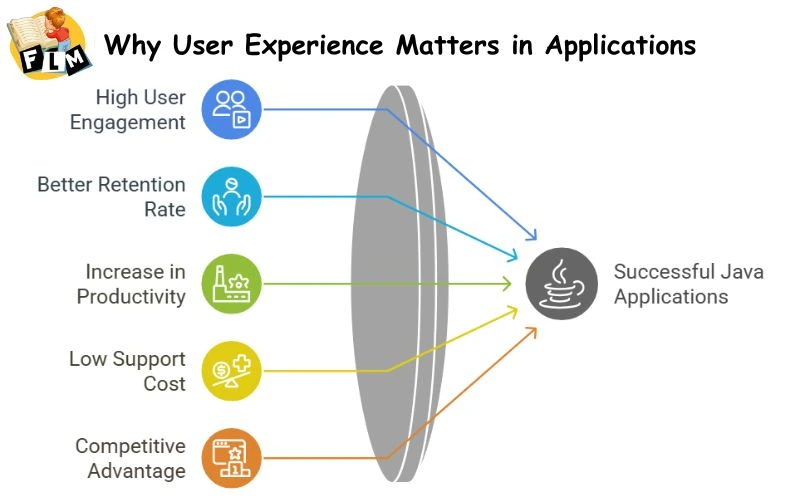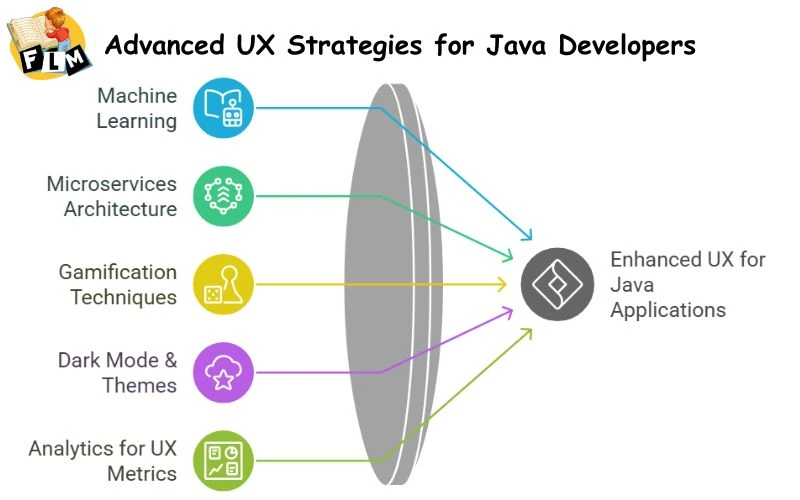In today’s fast-paced digital world, user experience (UX) plays an important role in the success of any software application. Whether it is a web application, mobile app, or enterprise software, it is necessary to provide a spontaneous and spontaneous user experience. For developers, it is important to write efficient code to ensure a high quality User Experience in Java applications.
In this broad guide, we will detect the best practices for the importance of user experience, improve UX in applications, and how developers can integrate UX principles into our development workflow.
Why User Experience Matters in Applications

User experience is only more than a blind attractive interface – it defines how users interact with an application and consider how. It leads to a well-designed User Experience in Java applications:
- High User Engagement: A spontaneous and pleasant experience keeps users busy.
- Better retention rate: Users are more likely to continue using an application with an intuitive interface.
- Increase in productivity: A good UX reduces the learning curve and improves efficiency.
- Low Support Cost: Low Proactive issues means low customer grievances and low support expenses.
- Competitive Advantage: Applications that prefer UX stand out in the market.
Ignoring the user experience can result in high bounce rates, frustrated users and lower applications, making UX software an important factor of success.
Key Elements of User Experience in Java Applications
A Well-Designed application contains many UX elements that contribute to an overall seamless experience. The major components to consider below are given:
Intuitive User Interface (UI)
- Explanation:
- A well -structured and visually attractive UI ensures that users can easily navigate the application.
- Best Practices:
- Keep the UI elements simple and easy to understand.
- Use frequent layouts, color and typography.
- Apply clear navigation to users efficiently.
Performance Optimization
- Explanation:
- A sharp and responsive application improves the user’s satisfaction significantly.
- Best Practices:
- Adapt the code execution to reduce the lag.
- Minimize memory use and prevent performance.
- Use caching strategies to improve load time.
Responsiveness and Compatibility
- Explanation:
- Users use applications from various devices and platforms. Ensuring a consistent experience in all devices enhances the purposeful purpose.
- Best Practices:
- Design apps with mobile-first approach.
- Ensure compatibility with different screen sizes and resolutions.
- Test in many browsers and operating systems.
Accessibility Compliance
- Explanation:
- Following accessibility guidelines, applications should be usable by persons with disabilities.
- Best Practices:
- Provide alternative text for images and UI elements.
- Ensure keyboard navigability for all features.
- Follow the WCAG (Web Material Access Guidelines) standards.
Error Handling and Feedback
- Explanation:
- Users should receive meaningful responses when errors are allowed, allowing them to take corrective action easily.
- Best Practices:
- Display clear error messages with suggested solutions.
- Use verification techniques to prevent invalid input.
- Provide user friendly information for successful operation.
Security and Privacy
- Explanation:
- Users rely on applications that protect their data. It is important to apply security best practices for a good user experience.
- Best Practices:
- Encrypt sensitive data to protect user information.
- Apply safe authentication and authority mechanisms.
- Clearly communicate privacy policies and data uses.
Best Practices for Enhancing User Experience in Java Applications
Follow UI/UX Design Principles
A Well-Designed application should be visually attractive and easy to use. Developers should collaborate with UI/UX designers to ensure:
- A clean and structured layout.
- Clear Call-to-Action (CTA) button.
- Consistent iconography and typography.
Optimize Application Performance
A slow app may disappoint users and reduce the engagement rate. To increase User Experience in Java applications, focus:
- Server response time reducing time.
- To optimize the database query.
- Applying efficient algorithms.
Use Responsive Design Frameworks
Modern applications should basically adapt to various devices. Use responsible design techniques such as:
- CSS Media Query for Dynamic UI adjustment.
- Flexible grid layout for adaptive content display.
- Testing on various screen resolutions.
Improve Load Times and Speed
Users expect rapid application reactions. Techniques to increase speed include:
- HTTP reducing requests and optimizing assets.
- Using lazy loading for images and data-heavy materials.
- Implementing efficient data caching strategies.
Conduct Usability Testing
Regular usability tests ensure that real users find the application comfortable and functional.
Methods:
- A/B test to compare different design elements.
- User behavior to analyze heatmaps.
- User feedback and survey to assemble insight.
Enhance Search and Navigation Features
Users must be able to find information easily. Increase discovery by:
- Applying automatic complete suggestions.
- Using filters and categories to refine the search results.
- Displaying more popular discoveries recently for convenience.
Personalization and Customization
Personal experience users improve satisfaction and engagement. Consider:
- Allows users to adapt the theme and layout.
- Providing personal recommendations based on user activity.
- Using AI-powered features for adaptive UI/UX improvements.
Advanced UX Strategies for Java Developers

- Leverage Machine Learning for UX Improvement
-
- AI-driven features can increase the UX by predicting the user’s behavior and by automating repeated functions.
- Use Microservices Architecture for Scalability
-
- Breaking applications in modular services improves stability and performance.
- Include Gamification Techniques
-
- Adding awards, achievements and interactive elements can increase user connectivity.
- Apply Dark Mode and Theme Option
-
- Providing dark mode and custom themes allows users to personalize their experience.
- Use Analytics to Track UX Metrics
-
- Measuring the user behavior helps developers to improve data-driven UX.
Conclusion
A great User Experience in Java applications is essential for user satisfaction, engagement and long-term success. By focusing on the UI design with intuitive knowledge, adaptation of performance, ensuring access, and implementing the best practices, developers can create applications that users like.
Increasing the UX is a continuous process that requires continuous response, testing and recurrence. By integrating the UX strategies in the development cycle, the application can offer better purpose, enlarged adoption and a competitive lead in the industry.
With the development of user’s expectations, being ahead in UX trends ensures future proof and user friendly experience. Start preferring user experience in Java applications today and create simple, attractive and high -performing software solutions!
Suggested Articles:
-
A Step-by-Step Guide to Becoming a Java Developer
-
Common Debugging Tips for Java Developers
-
What’s Next After Completing Your Java Full Stack Course
Future-Proof Your Career with FLM’s AI-Powered Java Full Stack Development!
Java Full Stack Developer Training
Learn Java, Spring Boot, React.js, SQL, and AI automation to build powerful web applications. AI is transforming software development, and companies need skilled Java full stack developers who can integrate AI-driven solutions. This 5+ month live, interactive training will help you master real-world projects, automation tools, and industry best practices.
What You’ll Gain?
- High Demand – AI Skills Give You a Competitive Edge
- Earn ₹12 LPA+ with Java Full Stack & AI Expertise
- 100% Live, Expert-Led Training
- AI-Powered Development – Automate Coding & Debugging
- 7 Major & 7 Mini Real-World Projects for Hands-On Experience
- Mock Interviews, Resume Building & Career Guidance
- Exclusive: 2-Year Recording Access for the First 100 Enrollees
- Job-Ready Curriculum with Real-World Applications
Unlock your future with FLM’s AI-Powered Java Full Stack Development
Limited Seats Only– Enroll Now!
Visit: frontlinesedutech.com | Click Here to Enroll
WhatsApp: 8333077727

